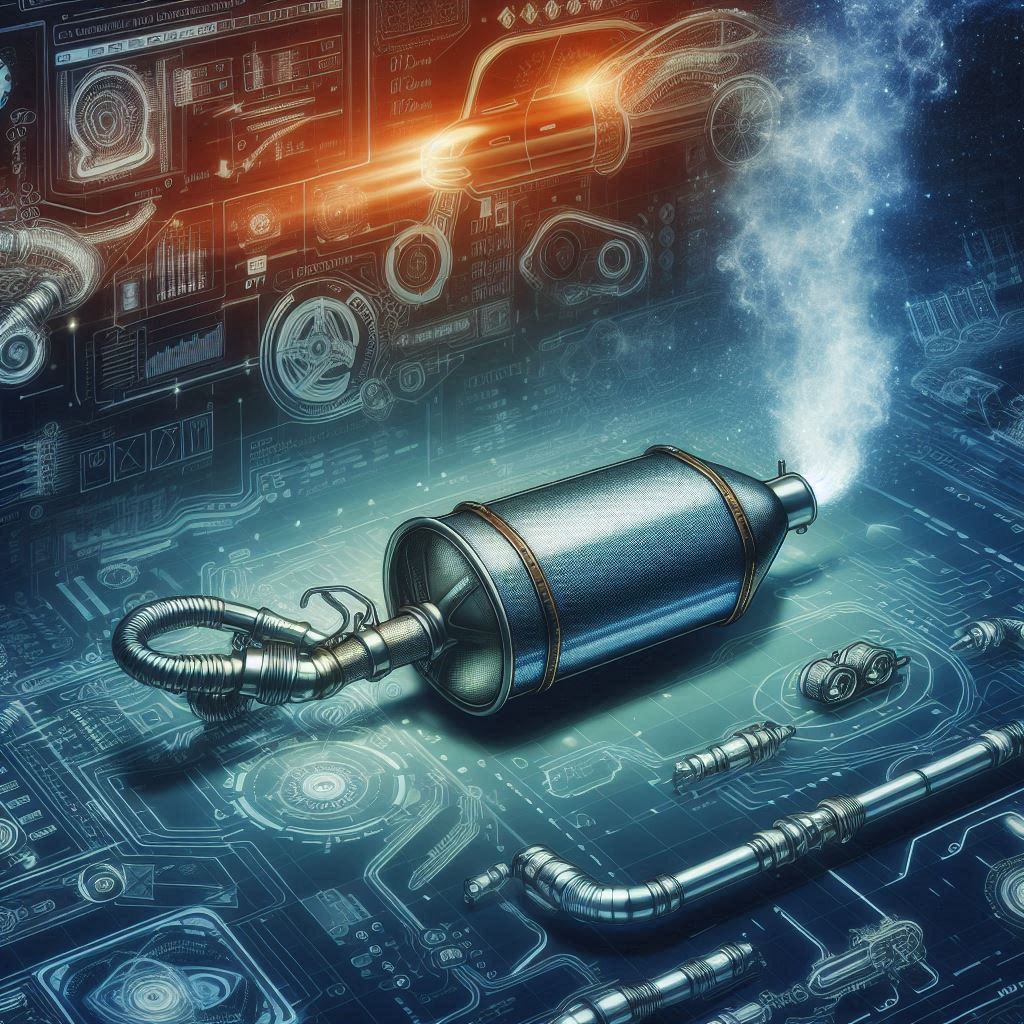
I’m going to start off by explaining what DPF stands for (Diesel Particulate Filter) and highlight its pivotal role in keeping diesel engines running clean. You’re going to find out about its crucial function in capturing soot and exhaust particles that pollute the air.
This isn’t just about keeping your engine free of gunk; it’s also about complying with strict environmental regulations that aim to reduce air pollution. The DPF is a hero in the background, working hard to filter out harmful emissions before they exit your vehicle’s exhaust system.
You might be wondering how this filter avoids getting clogged, given that it continuously collects particulate matter. Well, there’s a regeneration process that ‘burns off’ the accumulated soites – essentially, a cleaning cycle that keeps the filter from becoming a bottleneck for your engine’s performance.
When talking about DPF regeneration, there are some fascinating science and mechanics behind it – and that’s exactly where I’m heading next. We’ll explore how this self-cleaning feature operates between passive and active cycles and what your engine does to ensure it’s business as usual under the hood.
The Science of Clean: How DPF Regeneration Occurs

DPF regeneration is a fact of life for diesel engine vehicles, and understanding it can save you a lot of headache down the road. So how does this process actually work? At its core, DPF regeneration is the process of removing accumulated particulate matter (that’s the soot to you and me) from the filter in your diesel vehicle. Think of it like giving the filter a deep clean so it can continue to do its job effectively.
Now, there are two main types of regeneration: passive and active. Passive regeneration happens without any direct intervention. It occurs when the vehicle’s normal operating temperatures are high enough, often during long drives at steady speeds, to naturally burn off the soot in the DPF. It’s an unsung hero, quietly working in the background as you rack up the miles on the highway.
On the flip side, we’ve got active regeneration. This is a bit more hands-on and happens when passive regeneration isn’t enough to clear the filter. Active regeneration involves the vehicle’s engine control unit (ECU) – that’s the vehicle’s brain, essentially. When the ECU detects an increase in pressure suggesting a clogged DPF, it intercepts by injecting extra fuel post-combustion to increase exhaust temperatures and initiate a burn-off.
But that’s not all. There are various factors that influence the DPF regeneration process. I’m talking about things like your driving style, the quality of diesel you’re putting in the tank, and even the type of journeys you’re taking. Frequent short trips, for example, might not allow the DPF to passively regenerate, leading to more active regeneration cycles.
If you take anything away from this, remember that your DPF is doing a tough job and doing it well as long as conditions allow. But maintaining those conditions – that’s a story we’ll touch in the next section.
Maintaining Your DPF: Tips and Best Practices
I’m going to let you in on how to keep your diesel particulate filter, or DPF, in top shape. This isn’t just about saving on future repair costs, it’s also about ensuring your vehicle runs efficiently and keeps emissions low.
For starters, it’s all about the kind of driving you do. Frequent short trips where the engine doesn’t reach optimal operating temperature can be a DPF’s nemesis. Instead, regular longer drives at higher speeds allow your DPF to naturally reach the temperatures needed for passive regeneration. Think of it as giving your DPF a good ‘burn-off’ to clear out the soot.
What’s more, keep an eye on your dashboard. Your vehicle is designed to tell you when the DPF is getting clogged. Typically, a warning light will illuminate. Delaying action could lead to a fully clogged filter, and trust me, you don’t want the cost of replacement.
It’s not just about reaction; it’s also about prevention. Using the correct type of oil that’s designed for DPF-equipped vehicles can make a big difference. Low-ash oil doesn’t leave behind much residue, which plays well with your DPF, minimizing blockage risks.
Regularly check-in with a mechanic for DPF evaluation. Your vehicle’s manual will specify intervals for professional DPF checks. This proactive approach can nip potential problems in the bud, sparing you from a time-consuming and more expensive DPF repair down the road.
You might wonder about additives or cleaners that claim to unclog your DPF. While some products may assist in soot combustion, nothing beats the effectiveness of proper driving habits and regular check-ups for maintaining your DPF’s health.
Choose something that resonates with you – whether it’s scheduling reminder alerts for maintenance or sticking to a driving routine that favors DPF health. It’s your call, but remember, taking these steps not only helps your vehicle; it also contributes to a cleaner environment.
Navigating DPF Issues: Troubleshooting Common Problems

You’re going to find out about the everyday challenges you might face with your DPF and how you can troubleshoot them. First, let’s tackle the frequent blockers to successful DPF regeneration. Short trips at low speeds, for instance, often don’t allow the DPF to reach the temperatures needed for regeneration. What you need to do is occasionally drive at higher speeds. This kicks the process into gear.
If you’ve spotted a warning light on your dash, don’t panic. It’s your vehicle’s way of prompting action. I’m here to help you decipher these signals and take swift measures. Simple situations can often be resolved by taking a longer drive at highway speeds to initiate active regeneration. However, if your DPF light stays on, you may need professional help to avoid costly damage.
Suppose you’re noticing a decline in performance or an increase in fuel consumption; these can be signs your DPF is clogged. You can sometimes clear mild blockages with fuel additives designed to assist in filter cleaning. Yet, if you’ve attempted this and problems persist, it’s a solid plan to reach out to a mechanic.
Ultimately, your relationship with your vehicle’s DPF doesn’t need to be complicated. Remember to choose something that resonates with you when it comes to maintenance: staying on top of DPF care with regular driving habits and acting quickly to warning signs. And if issues do arise, I really hope that you recall the tips shared here. Your first attempt doesn’t need to be your last, and with the right approach, maintaining a healthy DPF can be simple and low-stress.

